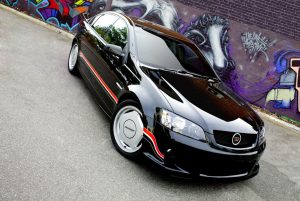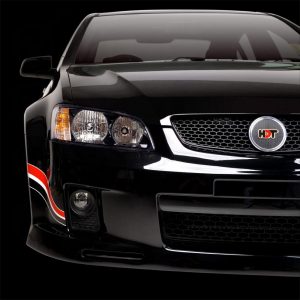Recalls: HDT VC Retro
Overview
Manufacturers, or importers, issue recalls for defects or faults which have the potential to cause injury. Generally, manufacturers will inform the original buyers if their vehicle is subject to a recall and of the steps required to remedy the defect or fault. Please note that the recalls below (if any) are for Australian-delivered vehicles only. Furthermore, the number of recalls should not be taken as an indication of a model’s reliability or its safety more generally.
Recalls: HDT VC Retro
- In October 2006, a recall was issued for HDT VC Retro models with 6.0-litre V8 petrol engines manufactured from July to August 2006 for an incorrectly manufactured fuel hose which connected the main fuel line and the injector rail in the engine bay (PRA 2006/8821).
- In November 2006, a recall was issued for HDT VC Retro models built prior to 11 September 2006 due to an incorrectly manufactured rear seat belt buckle (PRA 2006/8869).
- In January 2008, a recall was issued for HDT VC Retro models fitted with a 3.6-litre V6 petrol engine as one of the fuel lines in the engine compartment could rub against a fuel vapour hose clip (PRA 2008/9759).
Problems and faults: HDT VC Retro
Overview
This section identifies potential problems, causes and fixes based on the experiences of owners and repairers, online sources and technical service bulletins. This information is provided solely for reference purposes and AustralianCar.Reviews recommends that only properly qualified persons carry out repairs or modifications. Furthermore, the number of items below should not be taken as an indicator of a model’s reliability or the frequency with which they may occur.
To report a problem or fault to the AustralianCar.Reviews team, please use the Contact Us form. Note that AustralianCar.Reviews does not offer advice on automotive problems or disputes; such enquiries will not receive a reply. For vehicles purchased from dealers after 1 January 2011, please see our Australian Consumer Law fact sheet.
Holden VE L98 V8: clutch and slave cylinder
For Holden VE Series I models with the L98 V8 engine and T56 manual transmission, the slave cylinder was made from plastic and could develop leaks such that the clutch pedal would stay down when the car was driven under repeated high loads; the clutch would also slip at high rpm and wear prematurely.
To fix, the clutch and slave cylinder had to be replaced. A common improvement (often performed under warranty) was to fit the higher-rated LS7 clutch and improved slave cylinder that was introduced in the HSV E-Series range in April 2008 for the LS3 engine and the Holden VE.I range in September 2009 for the TR6060 transmission. The LS7 clutch had a 290 mm higher clamp load, an increase of 24 per cent over its predecessor.
HDT VC Retro: L98 V8 engine
Overview
With the exception of the early 5.7-litre LS1 V8 engines, General Motors’ LS V8 engines are regarded as being generally reliable. However, they may experience the problems described below.
Hydraulic lifter failure
For GM’s LS V8 engines, the hydraulic lifters may fail due to:
- A failed plunger within the lifter itself. When the plunger fails, it cannot maintain oil pressure and remains in a collapsed state – the lifter therefore cannot take up valve lash such that a tapping noise is heard that increases in volume and frequency with engine speed;
- The spring mechanism jamming – this is more common in older engines;
- Inadequate lubrication of the lifter roller wheel surface causing friction on the lobe (this generally results in a squeaking noise);
- Softened valve springs which also require replacement; or,
- Worn lifter buckets.
A failed hydraulic lifter can bend the pushrods which can then fall out of the space between the rocker arm and the top of the lifter. Once a pushrod falls out of that space, it may cause broken rocker arms, broken valves, cracked heads, a damaged cam or total engine failure.
It is recommended that the lifters be replaced every 100,000 kilometres, though failure of the hydraulic lifters is more common in engines with high-lift camshafts because higher spring pressure are required to prevent valve float, putting extra pressure on the lifter. Replacing the lifters requires that the cylinder heads be removed such that new head gaskets and head bolts are required.
Hydraulic lifter noise
From cold start-up, the hydraulic lifters may make a tapping noise. The most common cause of hydraulic lifter noise is particles in the engine oil becoming jammed between the lifter plunger and the lifter body, causing the plunger to become stuck down. The clearances between the plunger and body of a hydraulic lifter can be as little as 3 microns (0.003 mm) such that any particle larger than this in the oil can jam the lifter plunger in its body.
Lifter noise may also be caused by aeration of engine oil in the lifter’s pressure chamber since this increases valve closing velocity. Aeration of engine oil may be caused by:
- air in the higher pressure chamber of the lifter affecting valvetrain lash;
- air that is ingested into the lifter during a cold start due to a suction side leak at the oil pump or oil pump pick-up tube O-ring; or,
- low oil levels and high engine speeds.
Once air gets into the high pressure chamber, it will be slowly expelled through the narrow clearance of the plunger and body.
Rocker bearing failure
The rocker bearings – which sit on top of the valve train and transfer energy from the pushrod to the valve – can develop a sideways slop which can damage the valve tops, the rocker or valve springs. Furthermore, the rocker bearings can split such that the needle bearings fall out and end up in the oil pan.
Trunion bearing upgrade kits can be installed in the factory rockers which reduce sideways movement and provide a better range of vertical movement. Alternatively, after-market roller rockers can be installed which have better geometry than the standard rockers and control the valve more precisely via the centre of the valve tip.
Valve spring failure
The LS engine has ‘beehive’, single valve-type valve springs (as opposed to a dual valve spring which has a smaller spring inside the primary spring) and, in rare cases, the valve spring may break at its top where the coils are tightly wound. If a single valve-type valve spring breaks, it is common for the valve to be dropped, causing significant engine damage; sometimes, however, the valve may be held up by the valve locks when the spring is breaks. Symptoms of broken valve spring include:
- Engine vibrations;
- Loss of power beyond 4000 rpm;
- Misfire under load; and,
- Constant misfire.
If the vehicle is driven with a broken valve spring, a valve may come into contact with the piston, causing the valve to be bent. Furthermore, if the valve head breaks off, the engine will seize. To fix a failed valve spring, the cylinder heads need to be removed so that a new valve, head gasket and head bolts can be fitted.
For durability, it is recommended that high rpm are avoided when the engine is cold.
L98 V8 engines: other problems and faults
- The serpentine drive belt may squeal after start-up due to the air conditioning compressor being misaligned or problems with the power steering pulley.
- An oil leak may develop at the rear of the V8 engine due to a porous aluminium engine casting.
- For pre-November 2009 models with V8 engines, the air conditioning belt may get thrown off – a revised air conditioning compressor bracket and pulley were subsequently released to fix this. Alternatively, a separated harmonic balancer or coolant leaking from the hose clamps may cause this.
Suspension
- Knocking noises from the front suspension may be due to worn sway bar bushes or strut-top mounts/bushes.
Problems and faults: HDT VC Retro
- Heater hoses and water pumps should be checked for possible leaks.
- Water may leak through the firewall and a join in the plenum chamber, causing damp or mouldy carpets. Alternatively, water may leak into the front passenger foot well due to drain tubes cracking at the air box.
- The windscreen washer container was susceptible to cracking – this was a common replacement item.




